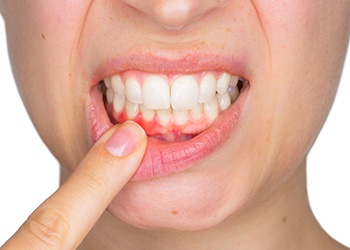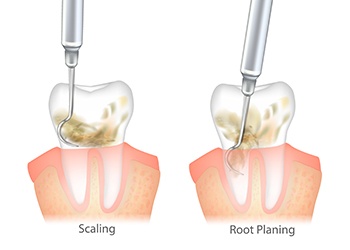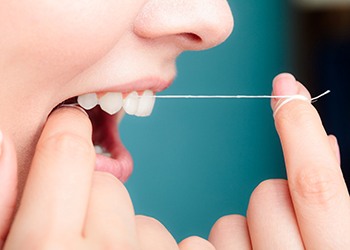Gum Recontouring – Winfield, KS
Correct an Uneven or Gummy Grin
Sometimes it’s not your teeth that make you feel insecure about your smile; it’s your gums. An excessive amount of gum tissue or an uneven gumline can make your teeth look far too short, leaving your grin looking less than dazzling. With gum recontouring, Dr. Parsons can help you transform your smile by strategically removing gum tissue from problem areas. If you think you might benefit from a gum recontouring procedure, please give us a call today.
Why Choose David C. Parsons DDS for Gum Recontouring?
- Soft-Tissue Laser for Painless Treatments
- Dentist with Over 4 Decades of Experience
- Caring, Friendly Dental Team
What is Gum Recontouring?

Gum recontouring is when unneeded gum tissue is removed. It is a cosmetic treatment intended for people who have “gummy” smiles. While it can be performed with scalpels, nowadays we prefer to use state-of-the-art soft tissue lasers instead; this makes the recontouring process much more comfortable and reduces the amount of time that you will need to recover afterward.
Should I Consider Gum Recontouring?

No cosmetic treatment is right for every patient, and gum recontouring in particular is designed to address a very specific kind of aesthetic issue. To determine whether gum recontouring is a good choice for you, we encourage you to schedule a cosmetic consultation with Dr. Parsons today.
Signs that you have a gummy smile that can be corrected with gum recontouring include:
- Seeing too much gum tissue when you smile.
- Teeth that look unusually small.
- An uneven gumline that covers some teeth more than others.
- Gums that make certain teeth look misshapen.
What is the Gum Recontouring Process Like?

When gum recontouring is performed using a soft-tissue laser, there is typically no need to numb the mouth beforehand. We will gently remove the gum tissue in select areas of your mouth and reshape the gumline to be more aesthetically pleasing. The recontouring process can take about one to two hours; it depends on the extent of the procedure.
The use of a laser can help eliminate the need for sutures. That said, you will still need to give your mouth some time to recover after gum recontouring. Our team will give you advice for taking care of your grin while your gums are healing.
Scaling & Root Planing
This is the most common treatment method used for addressing gum disease. To address the infection, we need to remove the plaque and tartar that exists above and beneath the gum line. This is done through a process called scaling and is a common recommendation for gum disease therapy. Following this, we perform root planing, which is a process where the tooth roots are smoothed out so they can begin to reattach to the gums. Continue reading to learn more about this process and some aftercare tips.
Do I Need Scaling & Root Planing?

If we notice any signs of gum disease during your routine checkups, such as bleeding, swelling, and inflammation, we will address it as soon as we can to prevent it from progressing and resulting in permanent damage to the gum tissue and other surrounding structures. The purpose of this procedure is to remove bacterial buildup around and beneath the gumline before smoothing down the roots to allow the area to heal.
The Process of Scaling & Root Planing

Scaling and root planing takes place over two separate appointments. The first one consists of the scaling. This is when we use dental tools to remove plaque and tartar that have accumulated along and beneath the gumline.
Once the scaling portion is complete, we will move to the root planing. We will smooth down the parts of the teeth that are normally hidden by the gums. This helps the gums to adhere back to the teeth and heal more smoothly. It also makes it more difficult for bacteria to build up in these areas again, reducing your risk of future infections.
Aftercare Tips for Scaling & Root Planing

It is common for patients to experience sensitivity after their scaling and root planing treatment. Swelling is also common. Fortunately, this is perfectly normal and temporary. It should resolve itself. Here are some tips to help the recovery process go by quickly:
- Brush twice daily using a soft-bristled toothbrush.
- Use a saltwater rinse after eating
- Floss thoroughly every day
- Stick to a soft-food diet for 48 hours after your treatment
- Avoid spicy, acidic, and hot foods
- Refrain from strenuous activities after your treatment
